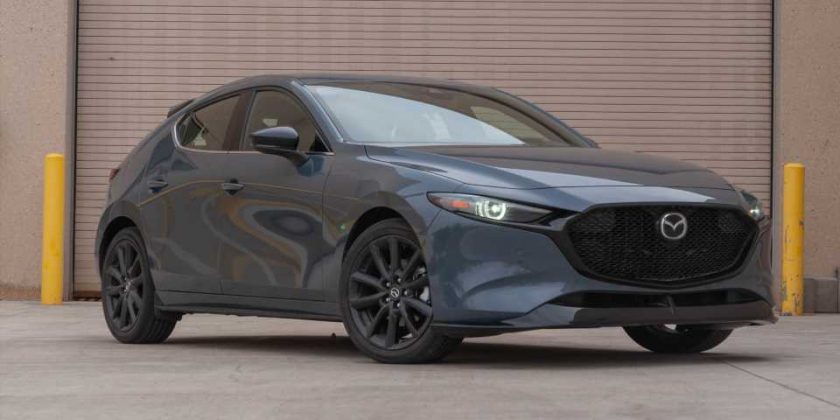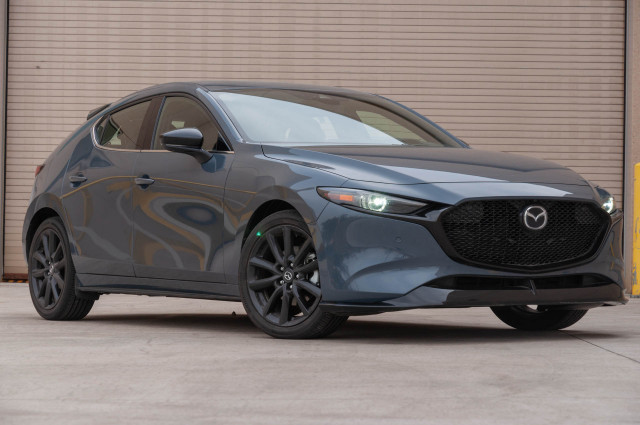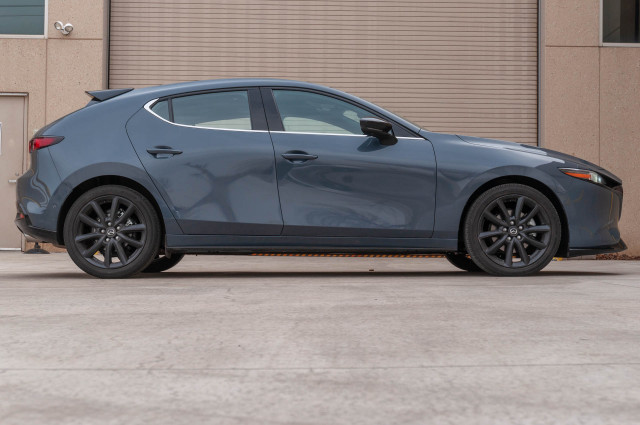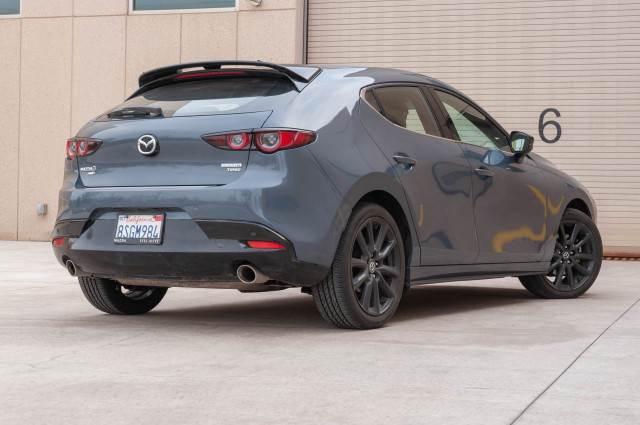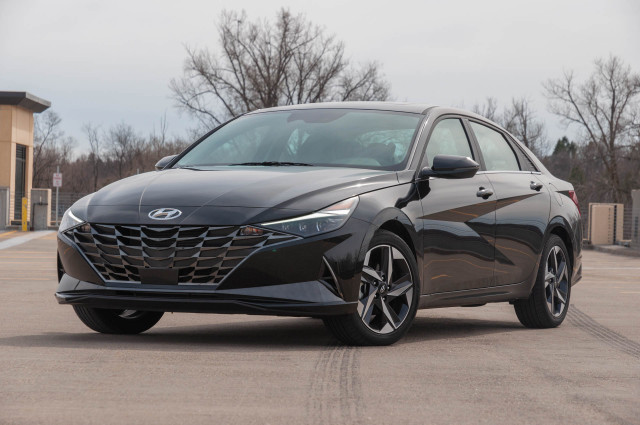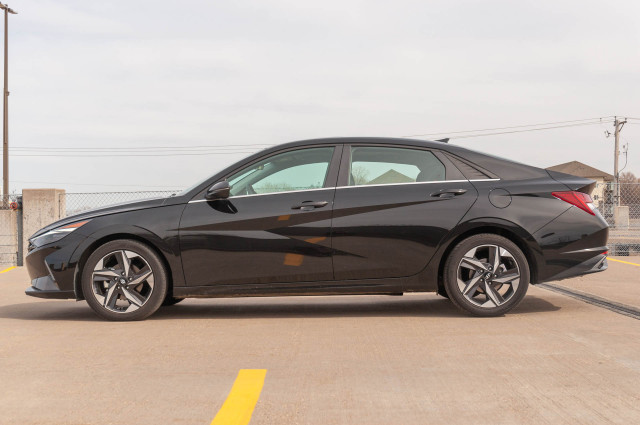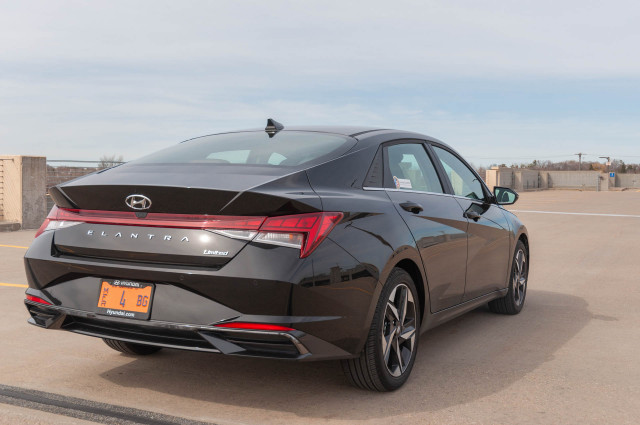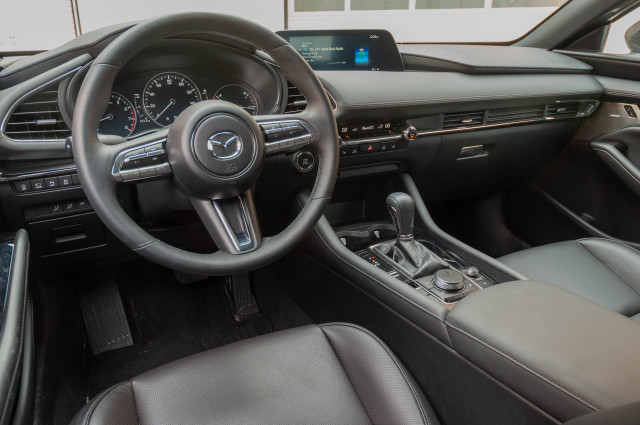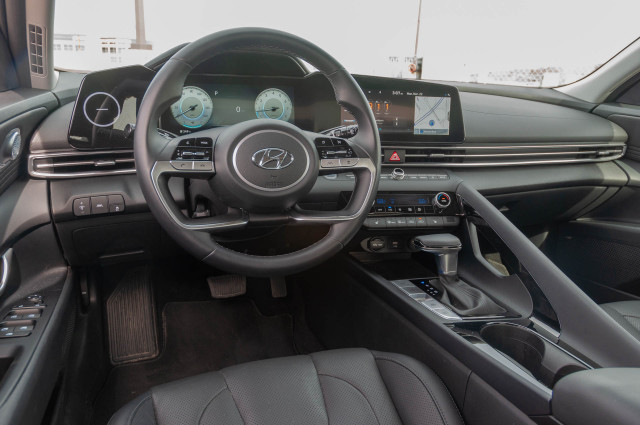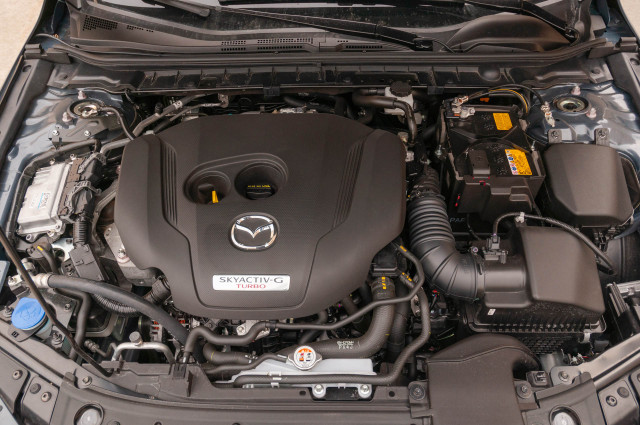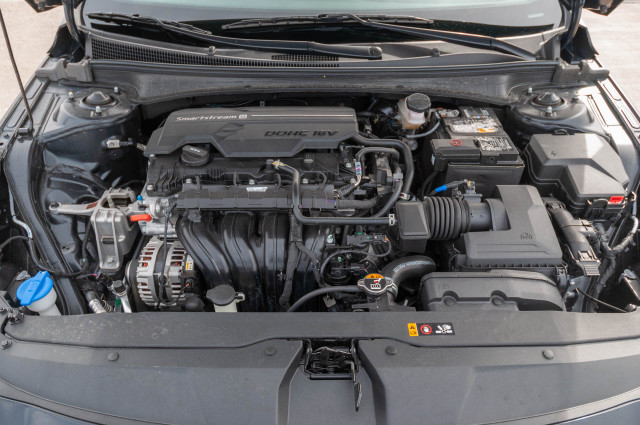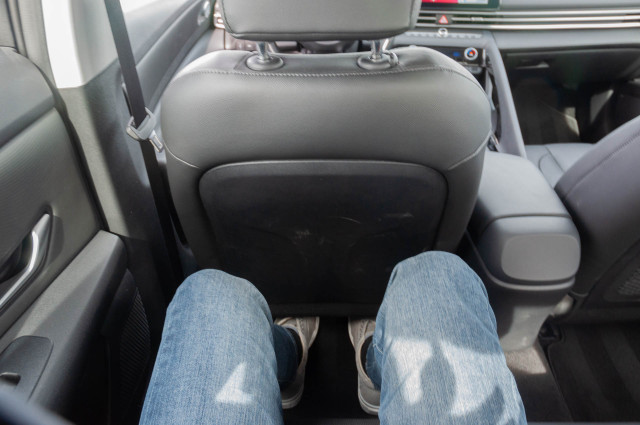Mainstream compact sedans are no longer penalty boxes. We’ve come a long way, baby.
Two of the better choices in the compact segment are the Hyundai Elantra and Mazda 3, but both break out of the box for different reasons.
The 2021 Mazda 3’s TCC Rating of 6.7 edges the 2021 Hyundai Elantra’s 6.6 score thanks to a new turbocharged model, premium cabin, terrific driving dynamics, great crash-test ratings, and available all-wheel drive. But the Elantra holds its own with a hybrid powertrain option, fun turbocharged powertrains, and a strong list of optional features. There’s more to the story than just the numbers, though the Elantra could get a boost once safety agencies crash test it.
2021 Mazda 3 Turbo
2021 Mazda 3 Turbo
2021 Mazda 3 Turbo
The stylish Mazda 3 looks like it costs more than its $21,500 base price. The sedan’s clean proportions are particularly handsome, but the hatchback’s thick C-pillar design is an acquired taste. Both look sporty whether sitting in a parking lot or moving down the road thanks to a low and wide stance, narrow headlights, and gentle body contours.
2021 Hyundai Elantra Limited
2021 Hyundai Elantra Limited
2021 Hyundai Elantra Limited
The Elantra looks sleek, but the creased panels and abundant angles are more daring than handsome. It doesn’t look as expensive as the Mazda 3, but grabs more attention, though whether it’s for the right reasons is up for debate.
2021 Mazda 3 Turbo
Inside, the Mazda 3 features a premium cabin with soft-touch materials, sporty seats, and bits of brightwork that all suggest a more upscale vibe than its more economy-oriented competition. This is despite the 8.8-inch infotainment screen rising from the dash like a random tablet.
2021 Hyundai Elantra Limited
Comparatively, the Elantra’s interior materials feel like they are pulled out of the bargain bin with cheap plastics reminiscent of Hyundai design from two generations ago. Upper trim models feature a 10.3-inch digital gauge cluster and 10.3-inch touchscreen infotainment system glued together in what feels like a knock-off Mercedes-Benz.
2021 Mazda 3 Turbo
Mazda keeps things simple in the powertrain department with three engine options. Skip the base Mazda 3s powered by an anemic 2.0-liter inline-4 making 155 hp. A larger 2.5-liter inline-4 with 186 hp steps it up, but still requires a heavy dip of the throttle to achieve its best performance. The 227-hp 2.5-liter turbo-4 new for 2021 is the healthiest engine in the mix and shaves nearly two seconds off the base engine’s 0-60 mph run to about six seconds, according to Mazda.
A 6-speed automatic is the only transmission and it snicks off shifts quickly with power going to the front wheels, though all-wheel drive is a nice option that isn’t found on the Elantra’s build sheet. A 6-speed manual transmission is offered, but only with the 2.5-liter inline-4, unfortunately. If only it could be had with the turbo. Hopes and dreams. Every Mazda 3 rides and drives on a stiff structure combined with soft dampers that deliver a great balance between ride and handling.
2021 Hyundai Elantra Limited
Most Elantras won’t have interesting engines under their hood, but a select few let owners extract greatness from the impressive chassis. The base Elantra is powered by a 2.0-liter inline-4 with 147 hp hooked to a CVT that mimics a good automatic transmission with pre-programmed ratios. But the power to the front wheels is lacking and freeway passing above 70 mph isn’t its strong suit. The N-Line model has a turbo-4 producing 201 hp and a 0-60 mph run of 7.0 seconds, and it can be had with a 6-speed manual or 7-speed dual-clutch transmission. The power lets the chassis show its true colors making the Elantra a more vibrant car. An Elantra with the full N treatment is coming later with about 275 hp.
A hybrid Elantra marries a 1.6-liter inline-4 with a 1.3-kwh lithium-ion battery pack and 6-speed dual-clutch automatic, yet it only has 139 hp. It’s a better option than the base powertrain, but really because of its stellar 54-mpg combined fuel economy.
The Mazda 3 in base form falls short of that with ratings of 28 mpg city, 36 highway, and 31 combined. It only gets less efficient with the larger, more powerful, engines.
2021 Hyundai Elantra Limited
Both the Mazda 3 and Elantra fit five adults, but that middle seat rider in the back will not be a happy camper. Those in the rear seat of the Elantra will be happier with 3.0 inches of extra leg room. Elantras have a slightly larger trunk at 14.2 cubic feet to the Mazda 3’s 13.2 cubic feet, but the 3 hatchback is more useful with up to 20.1 cubic feet of space.
The Mazda 3 aced its crash tests with a five-star rating from the NHTSA and a Top Safety Pick+ by the IIHS. The latest Elantra hasn’t been through a round of crash tests yet, but both cars come standard with active safety features including automatic emergency braking with pedestrian detection, active lane control, and automatic high beams. Mazda throws in adaptive cruise control and a driver-attention monitor that are optional on the Elantra. Both cars can be equipped with blind-spot monitors and rear cross-traffic alerts.
At $20,645, the 2021 Hyundai Elantra costs less than the Mazda 3. Each is well equipped with smartphone compatibility and 16-inch alloy wheels. Both can be loaded up with LED lighting, leather upholstery, and navigation. But while the two come similarly equipped, Mazda’s infotainment system is like a bad version of Audi’s old MMI system with a rotary dial and buttons to control the screen. It’s somewhat painful to tolerate, whereas Hyundai’s system features an 8.0-inch touchscreen that is a joy to use.
It might cost more at the pump, but the Mazda 3 wins out over the Elantra thanks to its premium cabin and sharp driving dynamics that are entertaining around a corner.
Summary
Styling
Performance
Comfort & Quality
Safety
Features
Fuel Economy
MSRP
Invoice
Fuel Economy – Combined City and Highway
Engine
Drivetrain
Source: Read Full Article
